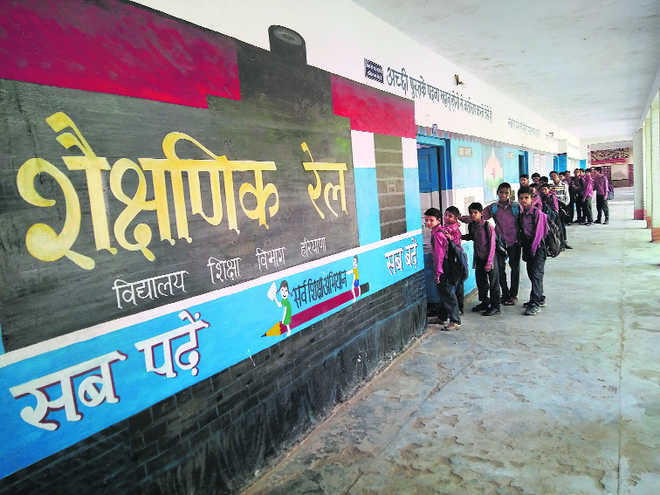
Sher Singh Sangwan
Presently, half of the total students study in government and aided schools compared to almost cent per cent during the 1960s. After passing class VIII in 1964 from the middle school at Kakroli Sardara village in Mahendragarh district, I joined Government High School, Dalawas, at a distance of 6 km. The school was in the fields. Water for drinking was drawn manually from a 90-ft-deep well with a rope and bucket. There was a small hostel in the school, for about 30 distant village students and teachers. Despite the location, the school was a reputed one. The credit was attributed to its good teachers, headmaster Bhola Ram Sharma, and founder Nanak Chand. Besides teaching, they cared for plantation, discipline and maintenance of building, despite being from outside the area.
Classes were held regularly and punishment was drawing water for irrigating plants on the campus. The punishment was to be carried out during recess or after-class hours. We used to eat lunch under the shadow of school trees. Lunch used to be two-three rotis wrapped in a cloth, with red chili chutney. I used to walk down 6 km, one way. It was a daily exercise! Drinking water on the way was available only at one place. Sometimes, we used to quench our thirst by drinking the milk of stray goats. Despite the distance, I received an award for the most regular student. The school used to give hundreds of rewards — from its meagre funds — to encourage students in academics, sports and miscellaneous activities.
Once, the headmaster called me to Bhiwani to purchase textbooks free of cost. I and my two friends started at 4 am and walked a distance of 30 km, in eight hours, which seems unbelievable now. He used to call a quarterly meeting of parents and teachers, which was rare at that time. That may be the reason that students from this school were on the merit list during 1963-66. I passed matriculation in 1966, winning a scholarship, despite the fact that a science teacher was not available and a plus-two-pass science student was brought by our shastri from Uttar Pradesh. He taught well, but left the school before the science practicals, which were held at Charkhi Dadri. A Sikh teacher was the examiner, and I dared to approach him for giving me good marks, as I hoped to get a scholarship. He was astonished and remarked, ‘Apni sifarish khud karte ho!’ Confident, I told him that he could give me any practical and I would prove myself. I satisfied him and was awarded 29 marks out of 30.
It may be the quality of teachers and dedication that made government schools what they were back then. Both of these have been eroded, especially after the 1980s, when the recruitment of teachers became recommendation-oriented. Cited as a ladder of equality, education has been broken down by the dominance of private schools with a high fee structure.
Join Whatsapp Channel of The Tribune for latest updates.



























